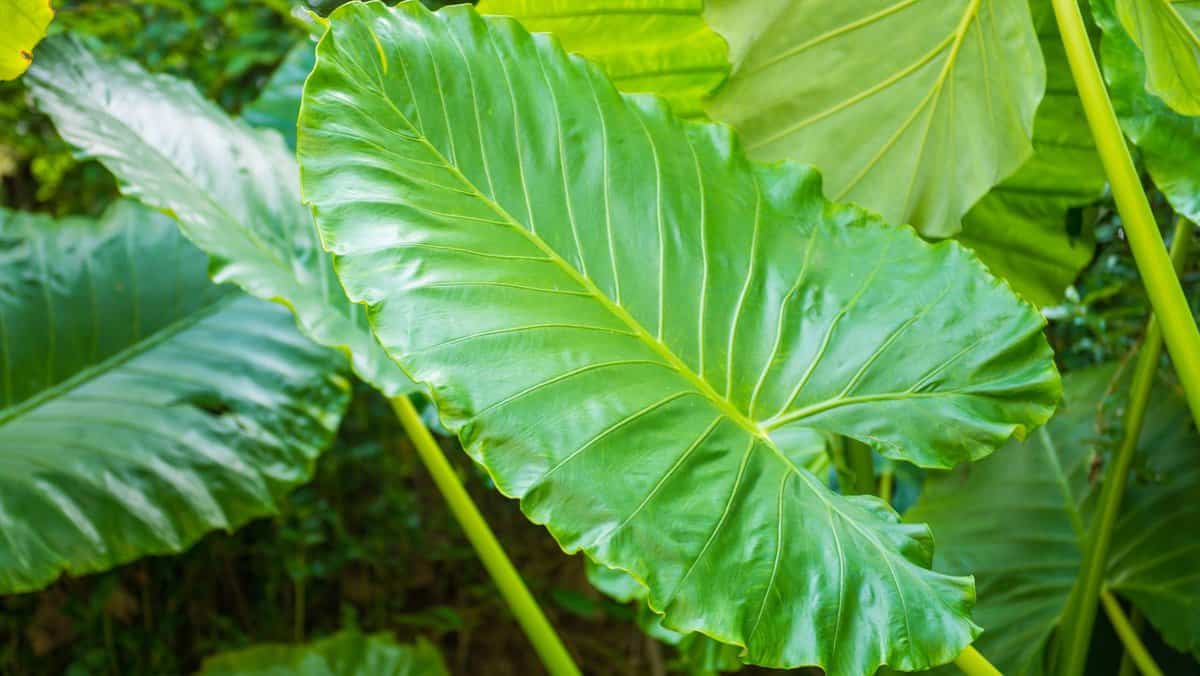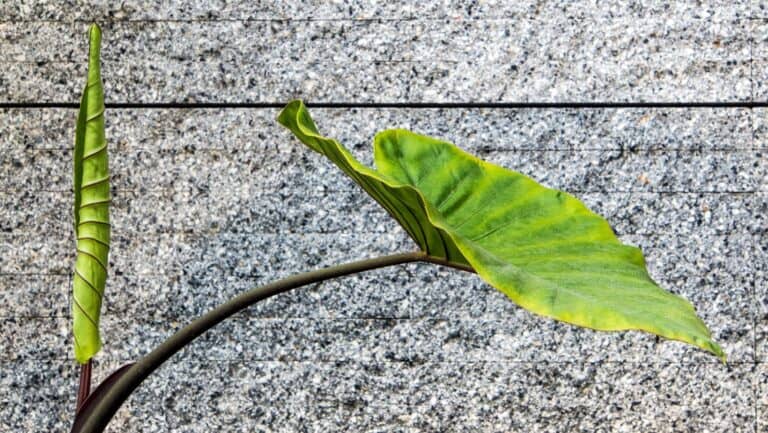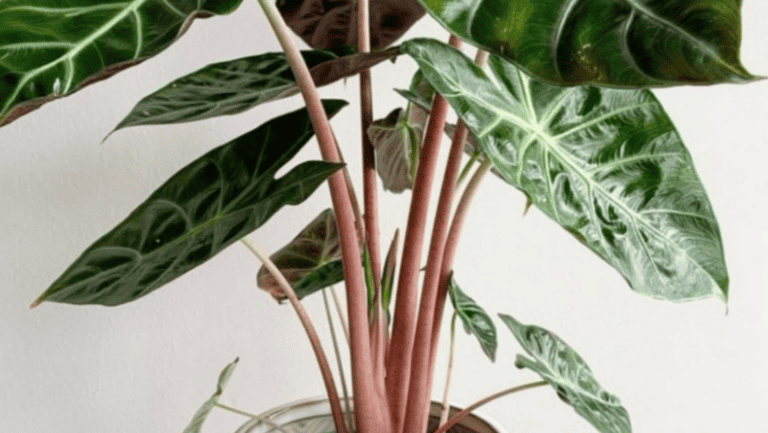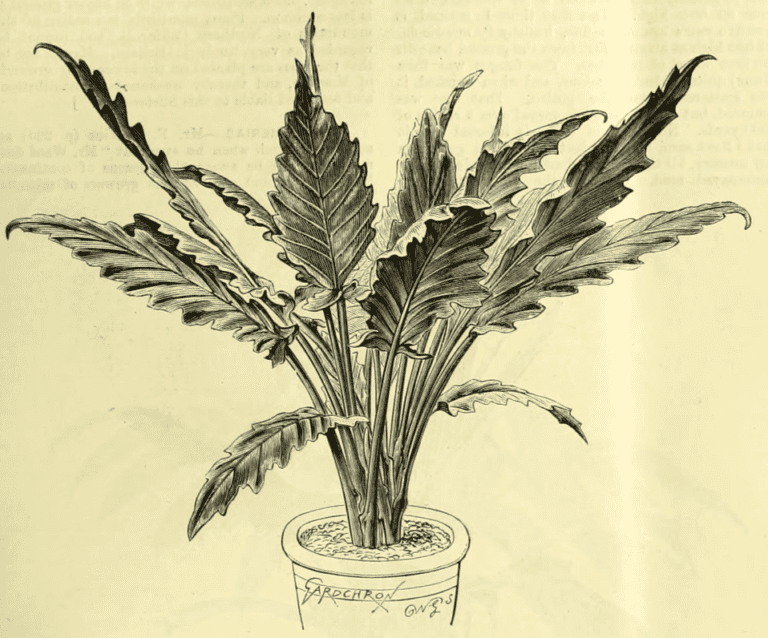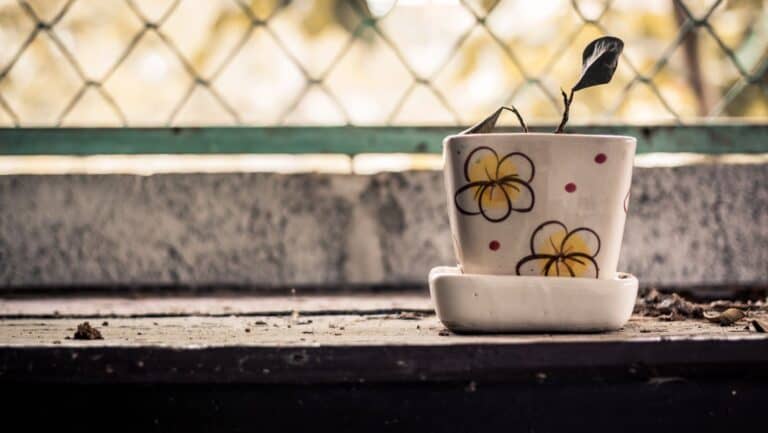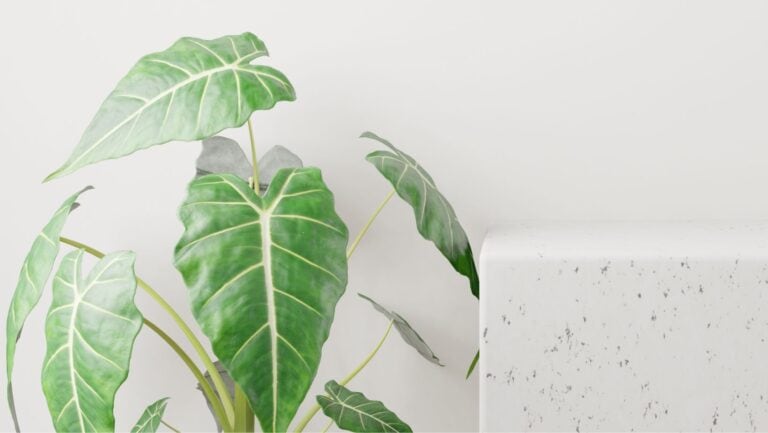How Big Can an Alocasia Plant Grow?
Alocasias are commonly called ‘Elephant Ears’, this nickname is associated with something big and strong. But exactly how tall can Alocasias grow? The question might seem simple, but…
There are over 80 species of Alocasias ranging from miniature beauties that never grow beyond 30-40 cm to impressive giants that can grow to 4-6 meters tall if the conditions allow it.
In this article, we charted most of the accepted Alocasia species to find the answers to questions on Alocasia size.
The information provided here is based on scientific descriptions of the plants and corresponds to their maximum size observed in the natural growing conditions. Indoors and in a pot with less light and humidity your Alocasia might never go as far as its wild ancestors, but at least you’ll know what she is capable of.
SIDE NOTE
On Fancy Names, Cultivars and Hybrids
As noted above, this article is based on information found in scientific taxonomies describing wild species of Alocasias. Yet, today many of our Alocasias are cultivated in nurseries and sold under fancy names that you won’t find in the scientific literature on wild plants.
When you step into a plant store, you find yourself surrounded by Yucatan Princesses, Silver Dragons, Regal Shields, Ninjas, Red Secrets, Black Velvet, you name it. A real fairy tale. So, how big will all those fancy-named Alocasias grow?
Many of those plants are cultivars or hybrids. Cultivars are varieties obtained by selective breeding. Their names often point at the trait accentuated through the process. For example, ‘Silver Velvet’ is a cultivar of Alocasia Reginula with characteristic silver-tinted leaves. If the scientific name of the species is not specified on the label, google the nickname and you’ll easily find it. The mature size of your cultivar will be in the same range as that of the parent wild species.
Hybrids are plants obtained by cross-pollinating two different species. They have two parents, each with its own size characteristics. For example, the popular hybrid ‘Regal Shields’ is a daughter of Alocasia Odora and Alocasia Reginula. While Alocasia Reginula is a small plant 25 cm tall, a wild Alocasia Odora can grow to impressive 2.5 meters.
It is logical to suggest that the offspring size will be somewhere between 25 cm and 2.5 meters, which is logical but not much helpful. In this case, we have a patent [link] containing the plant description which narrows the size range down to “30 cm to 1.2 m”, which is still large. This example is quite extreme. Many other hybrids have parents that are closer in size. For example, the non-patented hybrid Alocasia ‘Maharani’ is the offspring of Alocasia Reginula ‘Black Velvet’ and Alocasia Melo. Both of the parents are small. Alocasia Melo grows to 25-35 cm tall. So, it seems clear that Maharani will not grow into a jungle giant.
The bottom line: you need to know the parents of your hybrid Alocasia to estimate its potential size.
All in all, there are three distinctive size groups. There are giants that don’t leave you any doubt as to why are they called ‘Elephant Ears’, there are small varieties that never grow taller than 60 cm. Most of them are commonly called ‘Jewel Alocasias’. And there is that group of middle sized plants, like the all-loved Alocasia micholitziana for example, that are somewhere in between.
Large Alocasias
On the larger side, there are several green giants with enormous leaves that don’t leave any doubt about why they are called ‘elephant ears’. The best known is, of course, Alocasia Macrorrhizos that can reach 5 m in height and is an important food source too.
Yet, it is not the largest Alocasia.
Which Alocasia is the largest?
The champion of the Alocasia family is Alocasia Robusta. It can grow to 6 m (nearly 20 ft) tall and it leaves can reach up to 4 m long and nearly 3 m (more than 9 ft) wide.
Close behind is Alocasia Portei that can also grow to 6 meters tall, but has smaller leaves.

Also, you might be surprised that your favorite Alocasia Zebrina can also grow to 180 cm tall.
Middle-Sized Alocasias
What would be the size of a middle-size Alocasia? We analysed 84 accepted and scientifically describes species and in this group the average size is about 110 cm, while the median is only 70 cm. It is clear that the presence of the giants in the family is pulling the average size up, while the majority of Alocasia species are much more modest in size.
The most famous representatives of the mid-sized group questionably are Alocasia Sanderiana, Alocasia Cuprea (and yes, in natural conditions this beauty may grow to 80 cm tall), and Alocasia Micholitziana (Frydek, Green Velvet).
Small Alocasias
If you are looking for a small plant, you have a nice choice among all the miniature jewel Alocasias. The first to come to mind is Alocasia Reginula with its cultivars ‘Black Velvet’, ‘Ninja’ and ‘Silver Velvet’. Another small velvety beauty is Alocasia Melo, when mixed with Alocasia Reginula she produces a beautiful hybrid Alocasia Maharani. Alocasia Azlanii is a smaller red-head than Alocasia Cuprea, that does not grow beyond 30 cm tall.
What is the smallest Alocasia plant?
The smallest presently known species of Alocasias is Alocasia Minuscula, which owes its name to that very fact. It’s a rare beauty that only lives in lowland peat swamp forests of Sarawak, a Malaysian state on Borneo.
IMPORTANT NOTE
Alocasias that we have in our homes are of course descendants of the wild plants from Asia and Australia, but they are cultivated, that is grown in specific conditions different from their natural surroundings. And when we bring them in our apartments and houses they are exposed to daily and seasonal changes in temperatures, light, humidity that their ancestors would never imagine. They find themselves around other home plants of various origins.
That is why the sizes specified in this article provide only a general reference for estimating the potential size of your Alocasia. Its actual size and well-being depend on you and the growing conditions that you provide to her.

